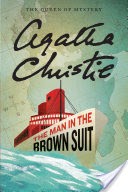🥰😉
Compelling evidence has come along to support at least parts of her theory, leading others to also wonder if Gimbutas wasn‘t quite the fringe thinker she had been painted out to be. 😉 This turnaround came about not through any exciting new archaeological finds but because of a series of breakthroughs in biology. Back in 1984, scientists at the University of California, Berkeley, had managed to retrieve and reproduce short bits of DNA taken from












